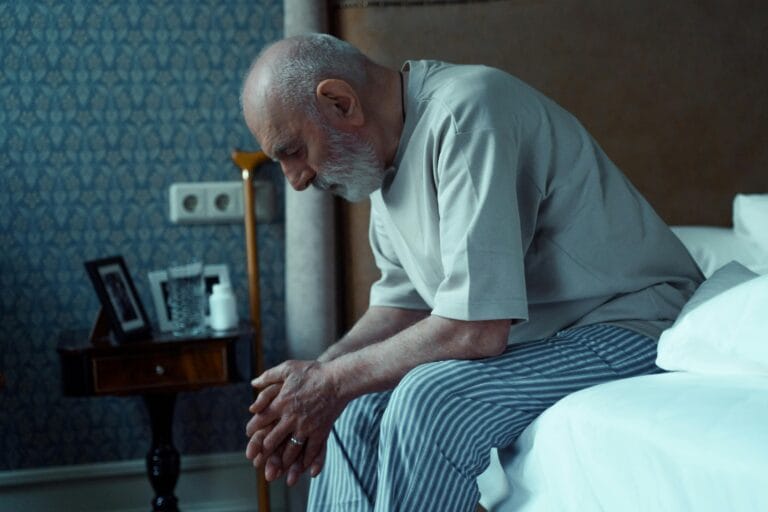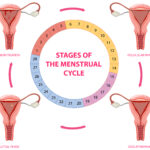FREE SHIPPING OVER $50
How Your Oral Health Changes as You Age and What to Do to Stay Healthy
Let’s face it—your teeth and gums aren’t immune to aging. While we often focus on staying fit, maintaining energy, or keeping skin youthful, oral health quietly shifts as we get older. And if you’re not actively keeping up with those changes, small dental issues can quickly snowball into serious problems.
In this article, we’ll break down exactly how your oral health evolves over time and give you practical, dentist-approved steps to keep your smile strong and healthy no matter your age.
Why Oral Health Gets More Challenging With Age

Aging brings natural changes to your body, and your mouth is no exception. As you get older, you may notice:
- More sensitivity
- Dry mouth (especially if you’re on medications)
- Receding gums
- A higher risk of cavities—even if you brush and floss daily
- Changes in how your bite feels or how dentures fit
These aren’t just cosmetic issues. Poor oral health has been linked to serious health concerns, including heart disease, diabetes, and even cognitive decline. So staying proactive about your dental health isn’t just about your smile—it’s about your whole body.
The Stages of Oral Health: What to Expect and How to Stay Ahead
Here’s a breakdown of how your mouth changes in each stage of adulthood—and what you can do to stay one step ahead.
1. Early Adulthood (20s to early 30s): Prevention Sets the Foundation
This is the time when your oral health habits take root. Many people feel invincible in their 20s, but it’s actually a critical time to build strong dental habits that last.
What to watch for:
- Wisdom teeth complications
- First signs of gum sensitivity
- Skipping dental visits due to busy schedules
What to do:
- Prioritize brushing and flossing consistently (2x per day)
- Use fluoride toothpaste for cavity prevention
- Get professional cleanings every 6 months
- Address grinding or clenching early
2. Midlife (Late 30s to 50s): Gums and Enamel Take the Hit
This is when the effects of earlier habits start to show. If you’ve had good dental hygiene, great. If not, you might start noticing issues like gum recession, yellowing enamel, or sensitivity.
What to watch for:
- Receding gums or “longer” teeth
- Increased plaque buildup
- Dental erosion from acidic foods or grinding
- Chronic bad breath
What to do:
- Add a water flosser to your routine for better gum care
- Consider using a desensitizing toothpaste
- Get screened for signs of gum disease
- Switch to an electric toothbrush for more effective cleaning
- Address acid reflux if it’s contributing to enamel loss
3. Older Adults (60s and Beyond): Managing Dry Mouth, Bone Loss, and Prosthetics
At this point, oral health becomes more complex. Age-related health conditions, medications, and decreased saliva production can impact your ability to maintain oral hygiene—and make your mouth more prone to infections.
What to watch for:
- Dry mouth (xerostomia) from medications
- Root cavities due to gum recession
- Ill-fitting dentures or bridges
- Bone loss in the jaw affecting tooth stability
What to do:
- Stay hydrated and ask your dentist about saliva substitutes or mouthwashes
- Clean dentures thoroughly and regularly
- Get annual oral cancer screenings
- Talk to your dentist about bone-preserving treatments if tooth loss occurs
- Keep up twice-yearly dental visits—even with full dentures
Additional Tips to Keep Your Oral Health Strong at Any Age
Beyond the age-specific changes, here are universally effective strategies that help protect your teeth and gums for the long haul.
1. Daily Oral Hygiene: The Non-Negotiables
Brush, floss, rinse, repeat. Brush for two minutes twice a day with fluoride toothpaste, floss daily (yes, daily), and rinse with an antibacterial mouthwash. Consistency beats perfection.
2. Diet Matters More Than You Think
Sugary foods and acidic drinks don’t just lead to cavities—they also erode enamel and alter oral pH, creating a breeding ground for bacteria. Focus on high-fiber vegetables, lean proteins, dairy (for calcium), and crunchy fruits like apples to naturally clean teeth.
3. Don’t Ignore Dental Pain or Bleeding
Bleeding gums are not normal. Whether it’s pain, swelling, or even loose teeth—get it checked early. Most oral health issues are easier (and cheaper) to treat when caught early.
4. Invest in Preventive Care
Even if your teeth feel fine, go to the dentist at least twice a year. These cleanings remove tartar you can’t brush away and help detect early signs of issues like gum disease or oral cancer.
5. Consider Lifestyle Factors
Smoking, heavy alcohol use, and unmanaged diabetes are all major risk factors for tooth loss and gum disease. Managing these lifestyle choices has a massive impact on your oral (and overall) health.
When to See a Dentist (Even If Nothing Hurts)
If you’re waiting for pain to book your next dental appointment, you’re already behind. Watch for these signs:
- Bleeding while brushing or flossing
- Persistent dry mouth
- Loose teeth or shifting bite
- Sores that don’t heal within 10 days
- Sudden sensitivity to hot, cold, or sweet foods
Being proactive saves money, pain, and teeth.
The Bottom Line
Your teeth age just like the rest of your body—and neglecting oral health can cause serious problems down the road. By understanding what changes to expect and adjusting your dental care accordingly, you can maintain a healthy smile well into your golden years.
It’s never too early—or too late—to take your oral health seriously. Start with small changes today, and your future self (and your dentist) will thank you.
Related Articles
- 8 Proven Ways to Straighten Your Teeth Without Braces (Dentists Swear by #3)
- Dentists Say These 10 Habits Can Save Your Gums—Are You Doing Them?
- NOBS Toothpaste Review: Honest Opinion on This Innovative Dental Solution
- Why Your Morning Coffee Routine Is Destroying Your Teeth, According to a Dentist
- Defend Your Smile: Top Cavity Prevention Tips and Risk Factors







